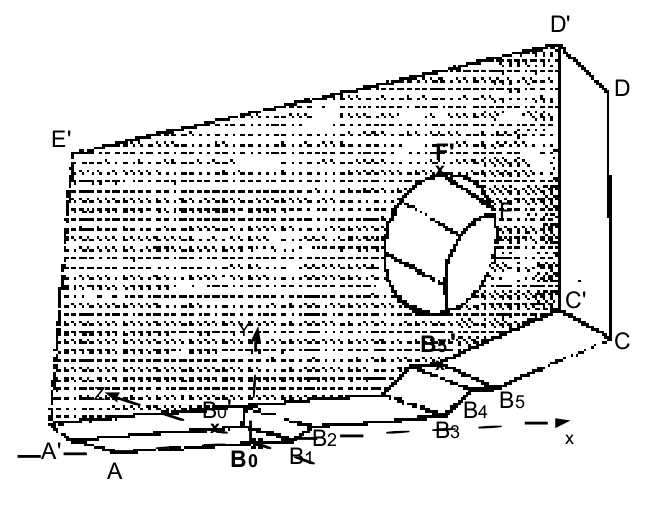1. Reference problem#
1.1. Geometry#

The geometry represents only a quarter of the test piece CTJ25:
planes of symmetry: \((x{B}_{0}y)\) and \((x{B}_{0}z)\)
Thickness: \(\mathrm{DD}’=12.5\mathrm{mm}\)
Face1: \((A,\mathrm{B0},\mathrm{B1},\mathrm{B2},\mathrm{B3},\mathrm{B4},\mathrm{B5},C,D,E)\)
Face2: \((A,\mathrm{B0},\mathrm{B0}\text{'},A\text{'})\)
Coordinates of the points (\(\mathrm{mm}\)):
min |
max |
\(B0\) |
|
\(B5’\) |
||
\(x\) |
-20. |
42.5 |
||||
\(y\) |
20.25 |
3.5 |
||||
\(z\) |
12.5 |
12.5 |
12.5 |
1.2. Material properties#
The elastic properties of the material are as follows:
Young’s module: \(E=2.027027{10}^{11}\mathrm{Pa}\)
Poisson’s ratio: \(\nu =0.3\)
1.3. Boundary conditions and loads#
All the \(\mathrm{face1}\) nodes: |
\(\mathrm{DZ}=0\) |
|
All the \(\mathrm{face2}\) nodes: |
\(\mathrm{DY}=0\) |
|
All the nodes in line \(\mathrm{FF}\text{'}\): |
\(\mathrm{DX}=0\) |
|